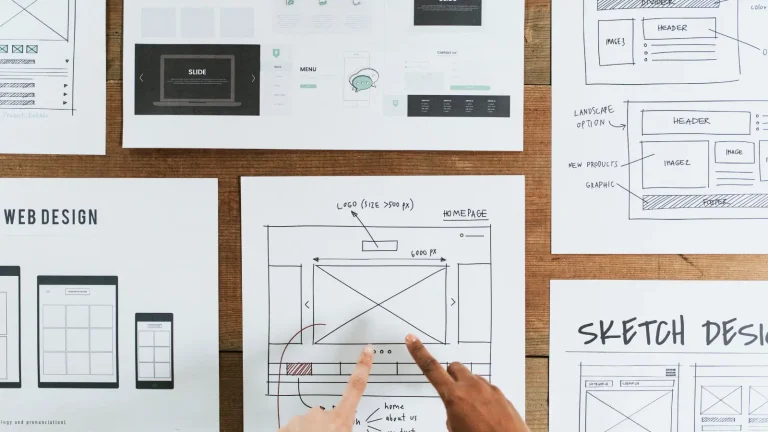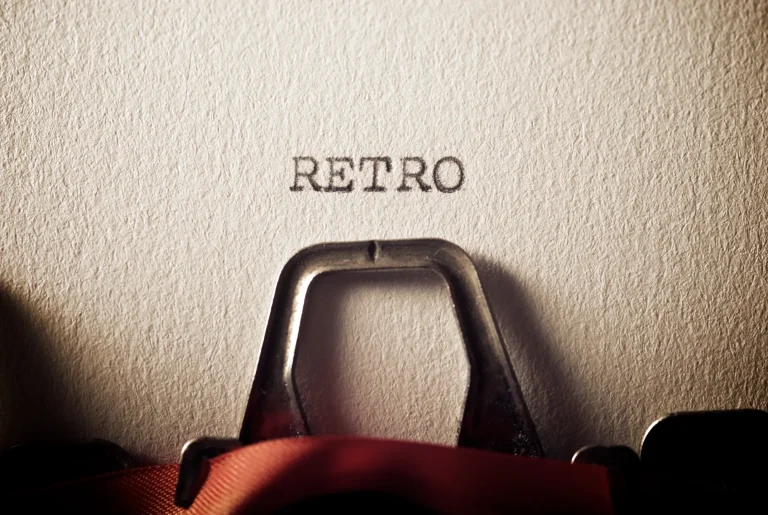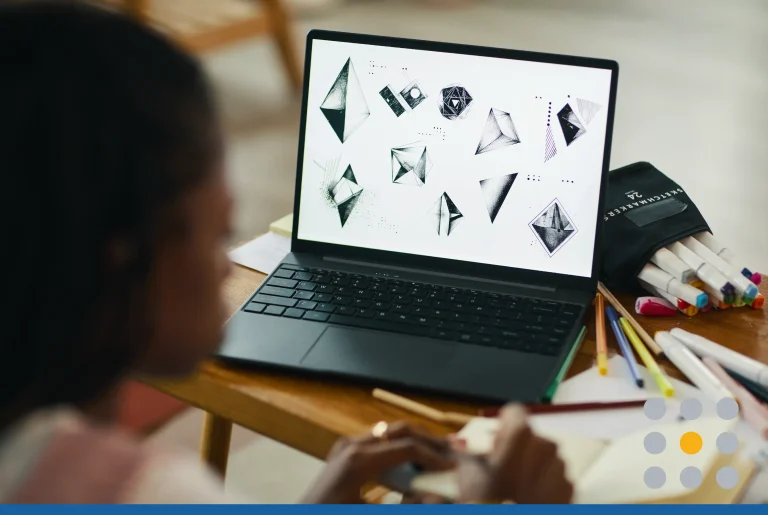Logos are like fashion; they evolve, shift with the times, and sometimes get a total makeover. We all want to create a logo that stands the test of time, but in certain instances, a refresh is necessary. Your logo is the face of your company; if it feels outdated or out of touch, that reflects poorly on your brand.
Undergoing a logo redesign can be nerve-racking, but it can help your brand feel fresh. What if the audience doesn’t respond well to the new logo? What if the company loses brand recognition? Will the new logo actually help bring in new business? These are all valid concerns. However, sometimes, you have to take a risk to elevate your brand to the next level and show your commitment.
Over time, some of the world’s biggest brands have taken the plunge into new design territory. Sometimes it’s a subtle tweak, like OpenAI slightly updating the blossom logo to make it seem “more organic and more human.” Other times, it’s a bold, dramatic shift that reimagines the entire look of a brand, like Airbnb’s massive rebrand a few years ago.
In this article, we’ll take a tour through some of the most iconic logo redesigns of all time. From timeless classics to controversial updates, we’ll explore why companies change their visual identity, what makes a redesign successful, and what lessons modern brands can learn in 2025 and beyond.
- Why Do Brands Redesign Their Logos?
- The Most Iconic Logo Redesigns of All Time
- Lessons from the Great Logo Redesigns

Why Do Brands Redesign Their Logos?
Before diving into famous examples, let’s talk about the “why.” There are numerous reasons, sometimes related to heritage, why a company might want to update its logo.
Oftentimes, a new logo design isn’t just about changing the aesthetics of a company’s branding; it’s about signaling a shift in content, services, or identity.
A company might redesign its logo to:
- Modernize its look to stay relevant in the digital era.
- Reflect changes in its services or brand identity.
- Differentiate itself from competitors.
- Appeal to a new target audience.
- Clean up complicated details that don’t work well in small formats.
For example, some brands in the early 2000s loved glossy, 3D effects. Fast forward to 2025, and flat, minimal designs dominate. If your logo still looks like a Windows XP desktop icon on your website, you probably need a refresh.
But it’s not always about keeping up with trends. Sometimes, a redesign comes when a company wants to show the world it’s entering a new chapter.
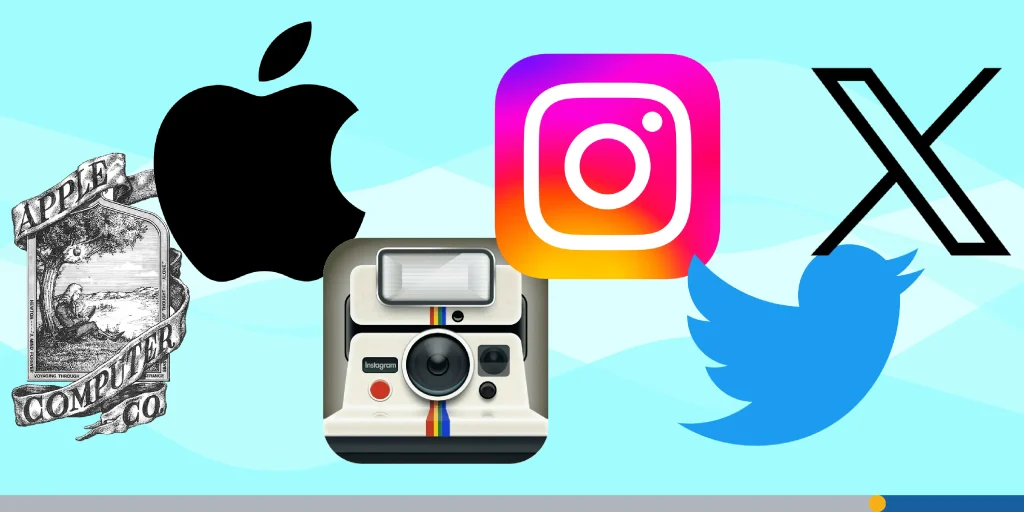
The Most Iconic Logo Redesigns of All Time
Let’s walk through history and spotlight the redesigns that made waves.
1. Apple
Few logo rebranding efforts are as legendary as Apple’s. In 1976, the company debuted with a wildly complicated sketch of Isaac Newton sitting under an apple tree. It looked more like a book illustration than a corporate logo.
By 1977, Apple simplified its identity to the bitten apple shape, filled with rainbow stripes. This colorful look reflected the brand’s creativity and innovation, two values it continues to emphasize.
Starting in the late 1990s, Apple ditched the rainbow in favor of sleek monochrome versions in blue, silver, or black. This reflected Apple’s rebirth under returning CEO Steve Jobs and its focus on futuristic design.
Apple gave a nod to the inspiration for the company’s original logo when it released the Newton MessagePad in 1993. Unfortunately for Apple, the product was a huge failure at the time, but it did pave the way for future products like the iPad.
2. Pepsi
If you lined up Pepsi’s logos over time, you’d see a masterclass in reinvention. Going back to 1898, you can see that Pepsi’s earliest logo was a curly red script, very similar to that of rival Coca-Cola.
The famous red, white, and blue globe wouldn’t appear until the 1950s, nodding to American patriotism. Pepsi gained a tremendous amount of popularity in the coming decades, but was always looking to improve its standing in the soda market.
In 2008, Pepsi paid the Arnell Group (an award-winning New York-based branding and packaging design firm) $1 million to design its new logo. The logo was designed based on the Golden Ratio and was one of the most expensive graphic design jobs of all time.
3. Google
Google’s 2015 logo update may look minor, but it was a seismic shift. Google’s earlier logo used a playful serif typeface, which screamed “early internet.” The new logo uses a clean, geometric sans-serif, keeping the same iconic blue, red, yellow, and green colors.
This new look worked better across devices, especially tiny mobile screens. It also reflected Google’s transformation into a company offering countless services, not just search.
Sometimes, the smallest changes make the biggest difference.
4. Starbucks: Dropping the Words
Starbucks started with a brown logo in 1971 that read “Starbucks Coffee Tea Spices.” Over the years, the siren was simplified, the colors shifted to green, and by 2011, the company took a bold step and removed all text from the logo.
Now, it’s just the siren. This new design reflects Starbucks’ confidence that its brand is recognizable without words. It also gave room to expand into teas, food, and even merchandise.
5. Instagram
Instagram’s 2016 redesign might be one of the most controversial of all time. Often known as the logo redesign that broke the Internet, Instagram boldly released its new, prismatic company logo in 2016, much to the dismay of its millions of users.
At first, users hated it. Memes mocked it. But over time, the gradient became iconic. Today, it’s instantly associated with Instagram’s digital-first identity.
This serves as an important lesson for any business undergoing a rebrand: sometimes, backlash is just part of the process.
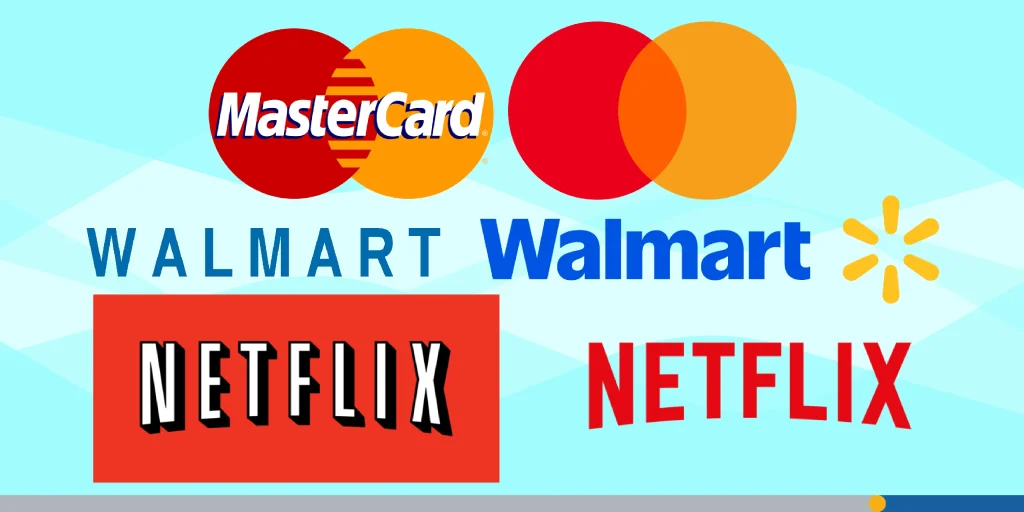
6. Mastercard
Mastercard’s rebranding is a perfect example of less being more. When you’ve got one of the most recognizable logos in the world, rebranding can feel like walking a tightrope. But Mastercard nailed it.
In 2016, Mastercard introduced a new visual identity that simplified its iconic overlapping red and yellow circles, and by 2019, it dropped the word “Mastercard” from the brand logo entirely.
This bold move was a smart response to changing consumer preferences in the tech world, where everything is moving to a mobile-first approach. The sleek, modern logo redesign embraced a minimalist look, making it perfect for tiny smartphone screens and apps.
7. Microsoft
In 2012, Microsoft unveiled a new logo design: a square composed of four colored tiles, blue, red, green, and yellow.
This move unified Microsoft’s identity across Windows, Office, and Xbox. The flat, geometric look was a huge departure from the old italicized wordmark.
It was a sign that Microsoft was entering a new era, focused on simplicity and clarity.
8. Netflix: The Red Evolution
Netflix’s early logo looked like a retro movie theater marquee. By 2014, the company slimmed it down to the clean red wordmark we see today.
But its biggest move came in 2016: the “N” ribbon. On mobile screens, this minimalist new design works perfectly. For a streaming brand built on content, a flexible logo was essential.
9. Twitter/X
In 2023, Twitter’s logo redesign shocked the world. Following the acquisition of the famous social media site by Elon Musk for a sum of $44 million, the bluebird, one of the internet’s most beloved icons, vanished. In its place: a stark, black-and-white “X.”
It wasn’t just a new design, it was a complete identity shift. While controversial, it proves how powerful logos are in shaping public conversation.
10. Walmart
Founded in 1962, Walmart introduced a simple business logo in plain blue text. Over the years, the company continued to use its brand name throughout its 5 additional logo revamps, which remained largely the same.
However, in 2008, the discount store decided on a much more bold approach: adding a company slogan. Their “Save money. Live better.” slogan was precisely what the company needed to stay competitive as the Great Recession rolled through America and the rest of the world.

Lessons from the Great Logo Redesigns
So, what can we learn from these iconic updates?
- Simplicity wins: Overcomplicated logos rarely age well. Minimalist, flat designs thrive in the digital era.
- Color matters: From Google’s playful palette to Mastercard’s bold yellow and red, colors carry emotional weight.
- Identity drives design: A logo must reflect the company’s brand identity, not just look trendy.
- Risk can pay off: Instagram’s gradient proves that controversial redesigns can become beloved.
- Sometimes old is new again: Many brands have turned to retro-inspired logos, showing that nostalgia is powerful.
- Flexibility is vital: Logos must work across social media icons, apps, merchandise, and large-scale branding.
Common Mistakes in Logo Redesigns
While a well-executed logo redesign can breathe new life into a brand, not every attempt hits the mark. If you’re considering giving your logo a new look in 2025, here are some pitfalls to avoid:
Changing Just for the Sake of Change
Some companies roll out a fresh design simply because it’s been a while, not because their brand identity needs it. Without a strong reason, like new services, a different audience, or modernization, the change can feel unnecessary. Customers often ask, “Why mess with something that worked?”
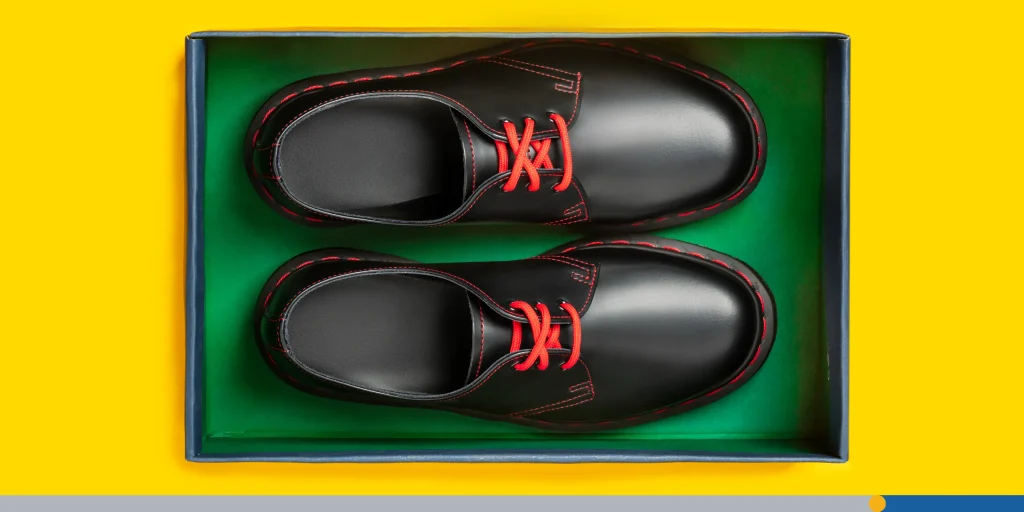
Losing Brand Recognition
One of the biggest risks in redesigning is stripping away what makes your logo recognizable. If your audience can’t immediately connect the new design to your company, you risk losing hard-earned trust.
Think of when Gap unveiled its 2010 updated look, a generic wordmark that erased the iconic blue box. The backlash was so strong, Gap reverted to the old logo in less than a week.
Following Trends Too Closely
Trends like gradients, 3D effects, or ultra-flat icons come and go. Designing solely to fit the latest fad may make your logo look dated within a few years. A strong identity should feel timeless, not trendy.
Ignoring Versatility
A modern logo needs to work everywhere, from billboards to app icons to merchandise. If your redesign looks great on a poster but turns into a blob at 40 pixels wide, it’s a failure. The best updated designs are scalable and adaptable.
Forgetting the Emotional Connection
A logo isn’t just a graphic; it carries memories, trust, and emotions. When a redesign wipes away these consistent visuals, customers feel alienated. Brands like Coca-Cola have resisted major redesigns for decades because they know the emotional weight their logo carries.
Not Testing the Redesign
Sometimes, a company rushes into a new design without testing how real customers perceive it. What looks “innovative” in a boardroom might look “ugly” to the public. Pre-launch feedback and A/B testing can prevent costly missteps.

Conclusion
A logo redesign isn’t something to be taken lightly. Your audience forms a long-lasting emotional connection to your brand’s logo, and when you change it, it’s sure to have an impact.
But when done right, a redesign can clarify who a company is and where it’s going. From Apple’s leap into minimalism to Instagram’s bold gradient, the most iconic redesigns show us how design, identity, and time intersect.
Is it time for your logo to get a refresh? Use FreeLogoServices‘ intuitive AI-powered logo maker to update your company’s logo or create a brand new symbol from scratch. The easy-to-use platform is perfect for all skill levels; no prior design experience required. Get started today!
FREQUENTLY ASKED QUESTIONS
Why do companies redesign their logos?
Brands update their logos to stay relevant, reflect changes in services, appeal to new audiences, or modernize their look for digital platforms.
How often should a company redesign its logo?
There’s no strict rule, but most brands consider a logo redesign every 7–10 years. Some just tweak the design; others go for a full overhaul.
What makes a logo redesign successful?
A successful redesign maintains the essence of the brand identity while modernizing the look. It should feel familiar yet fresh.
What are some of the most controversial logo redesigns?
Instagram’s gradient, Pepsi’s smile, and Twitter/X are among the most debated updates of all time.
Should small businesses redesign their logos?
Yes, if your current logo feels outdated, doesn’t reflect your services, or doesn’t scale well digitally, a new design can give your company a stronger identity across different customer touchpoints.
How do colors affect a logo redesign?
Colors carry meaning. Blue suggests trust, yellow brings energy, and red conveys passion. Picking the right palette can make or break your brand.
Can a redesign hurt a brand?
Yes. If a redesign strays too far from what people recognize or love, it can spark backlash and weaken brand identity. Balance is key.
